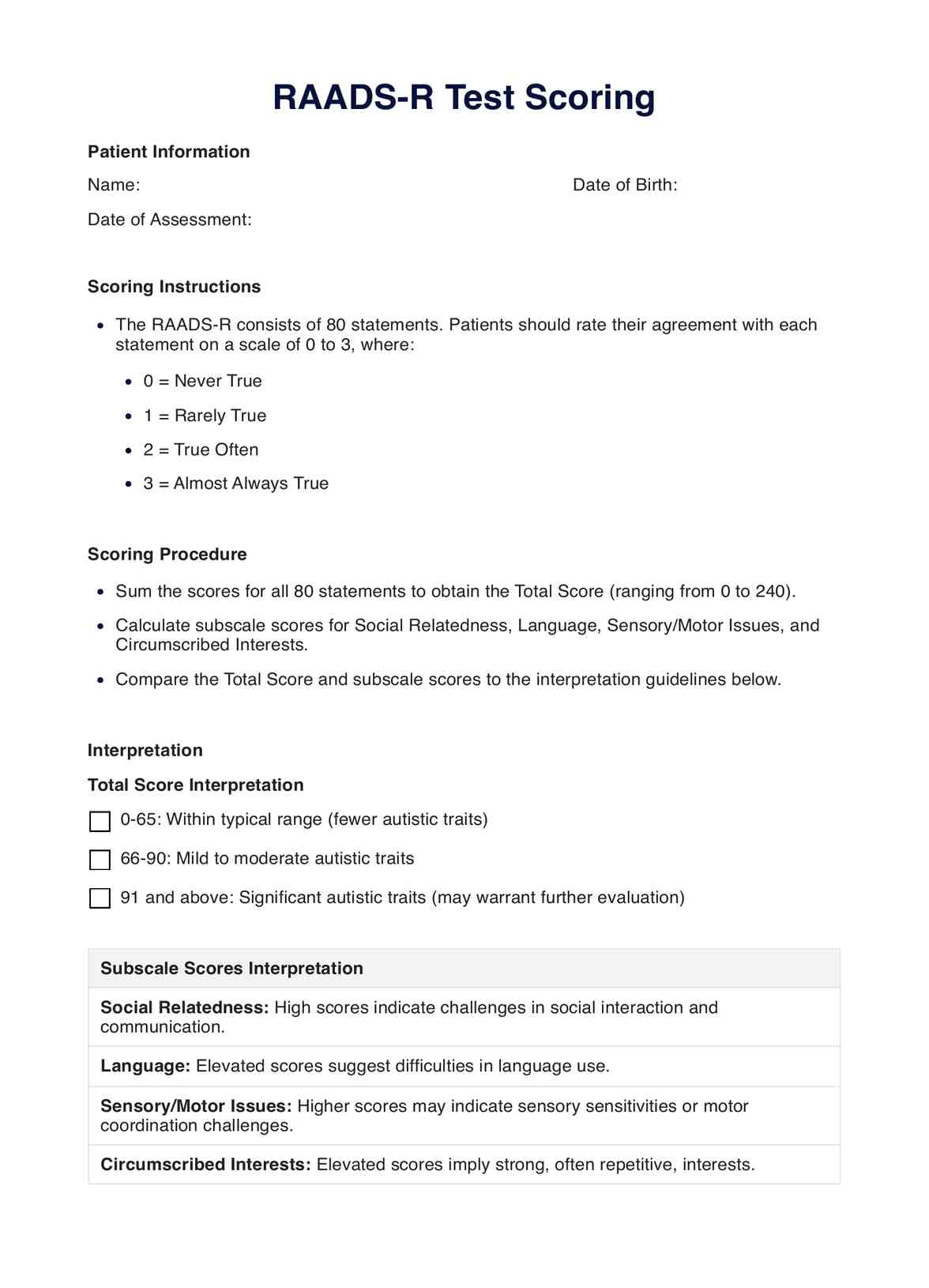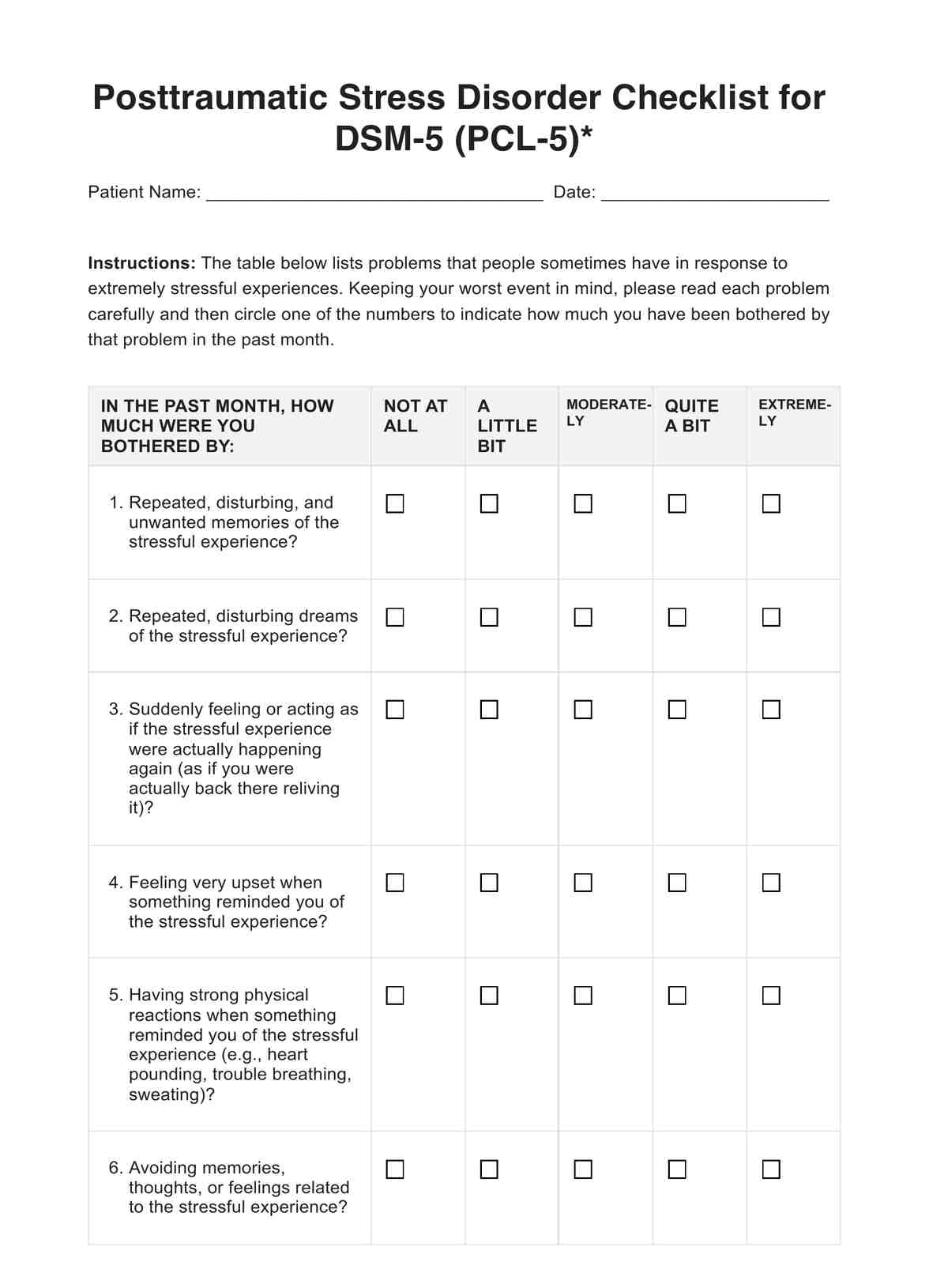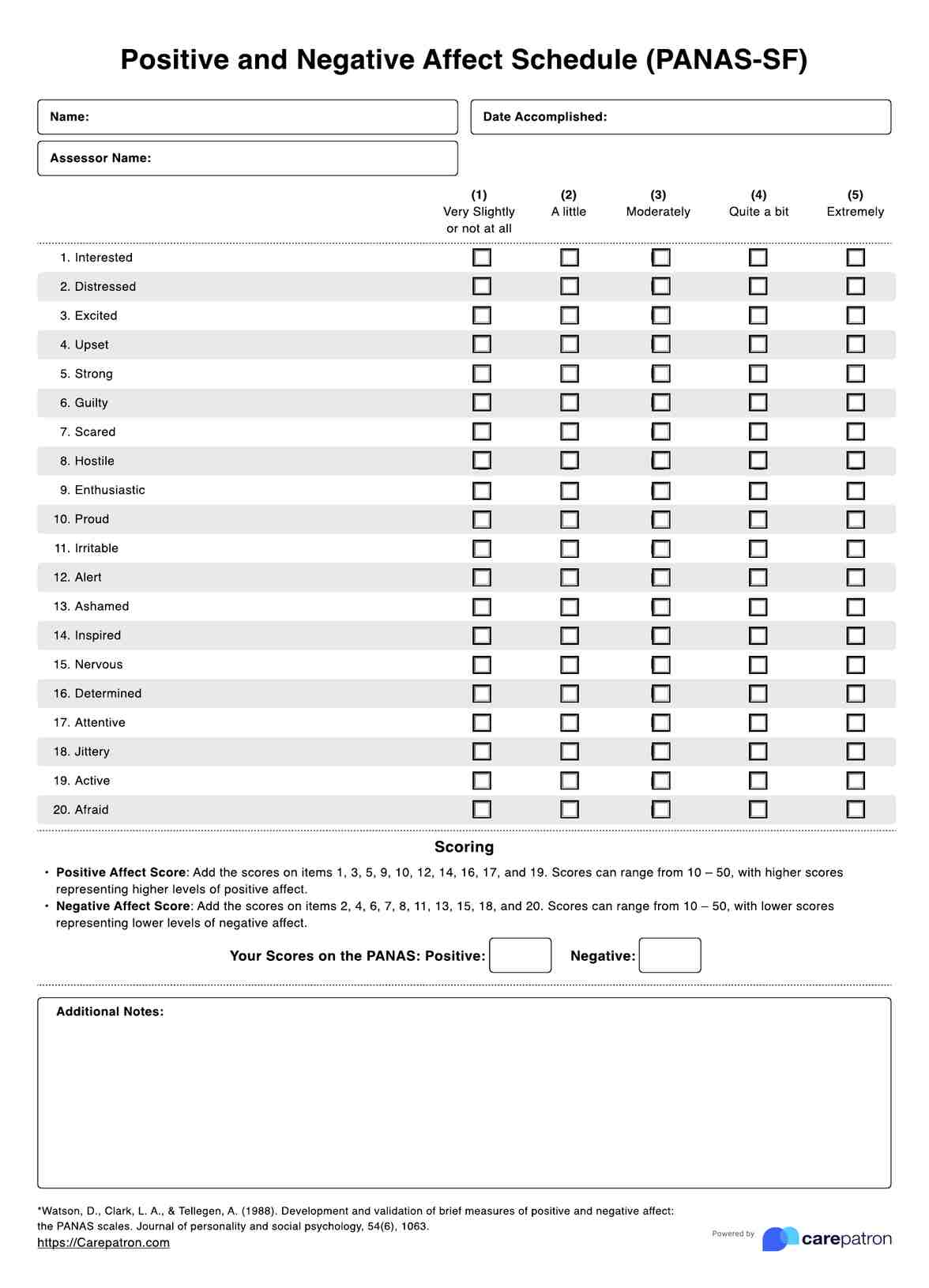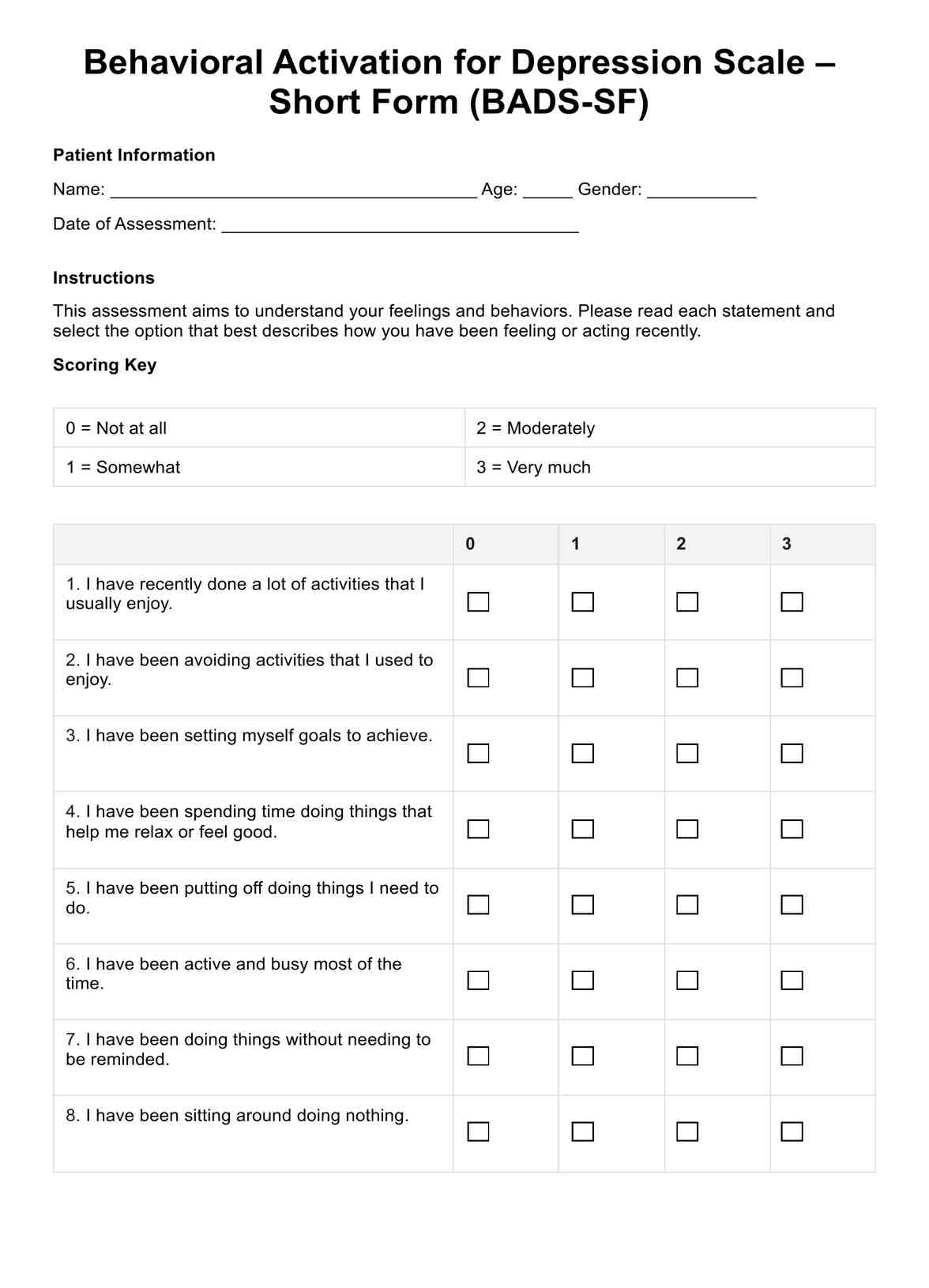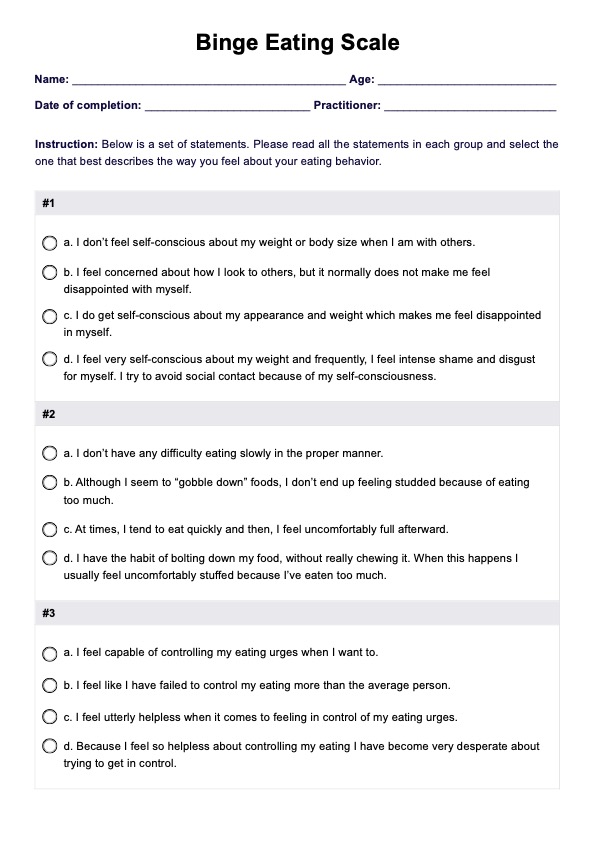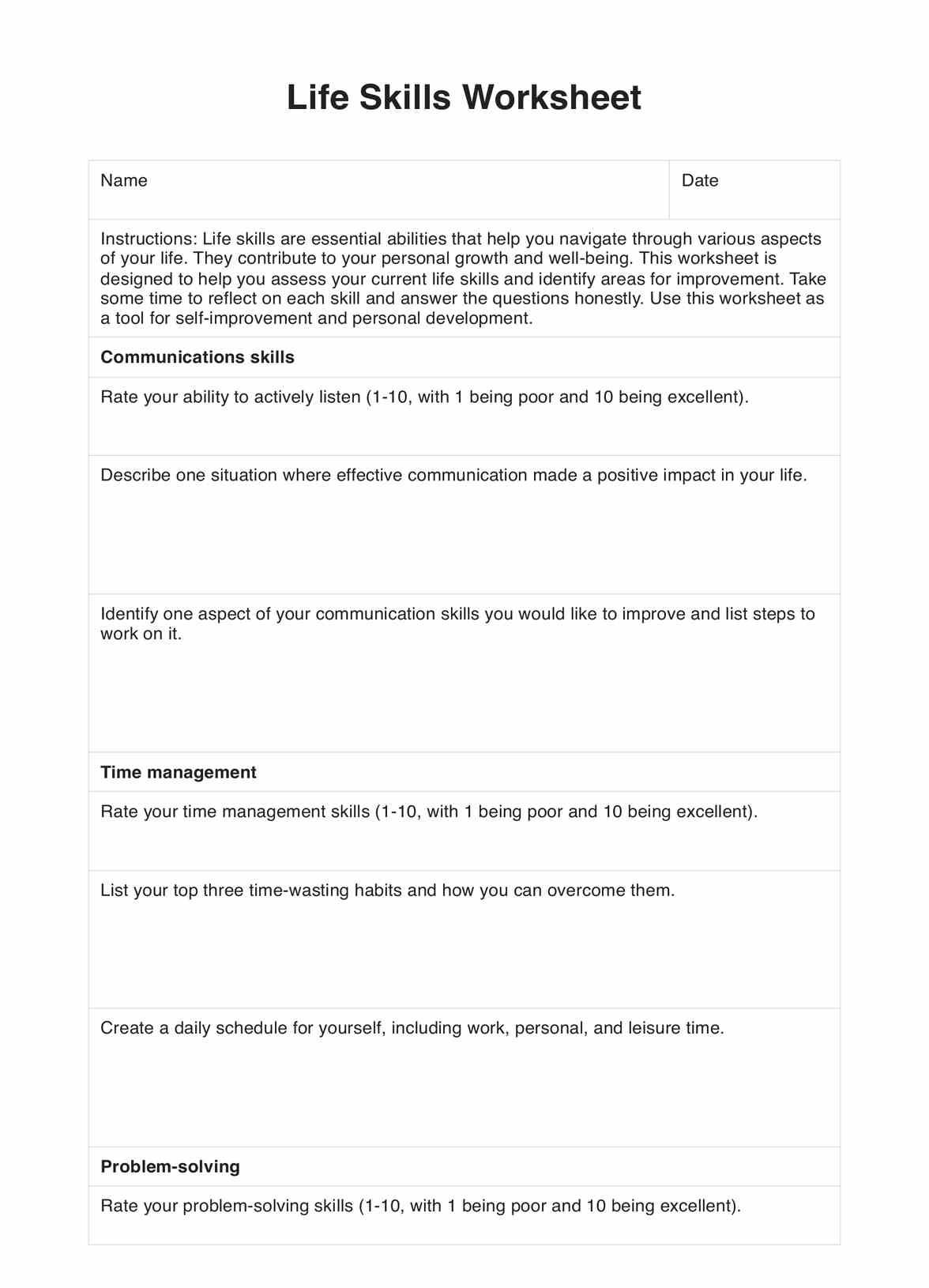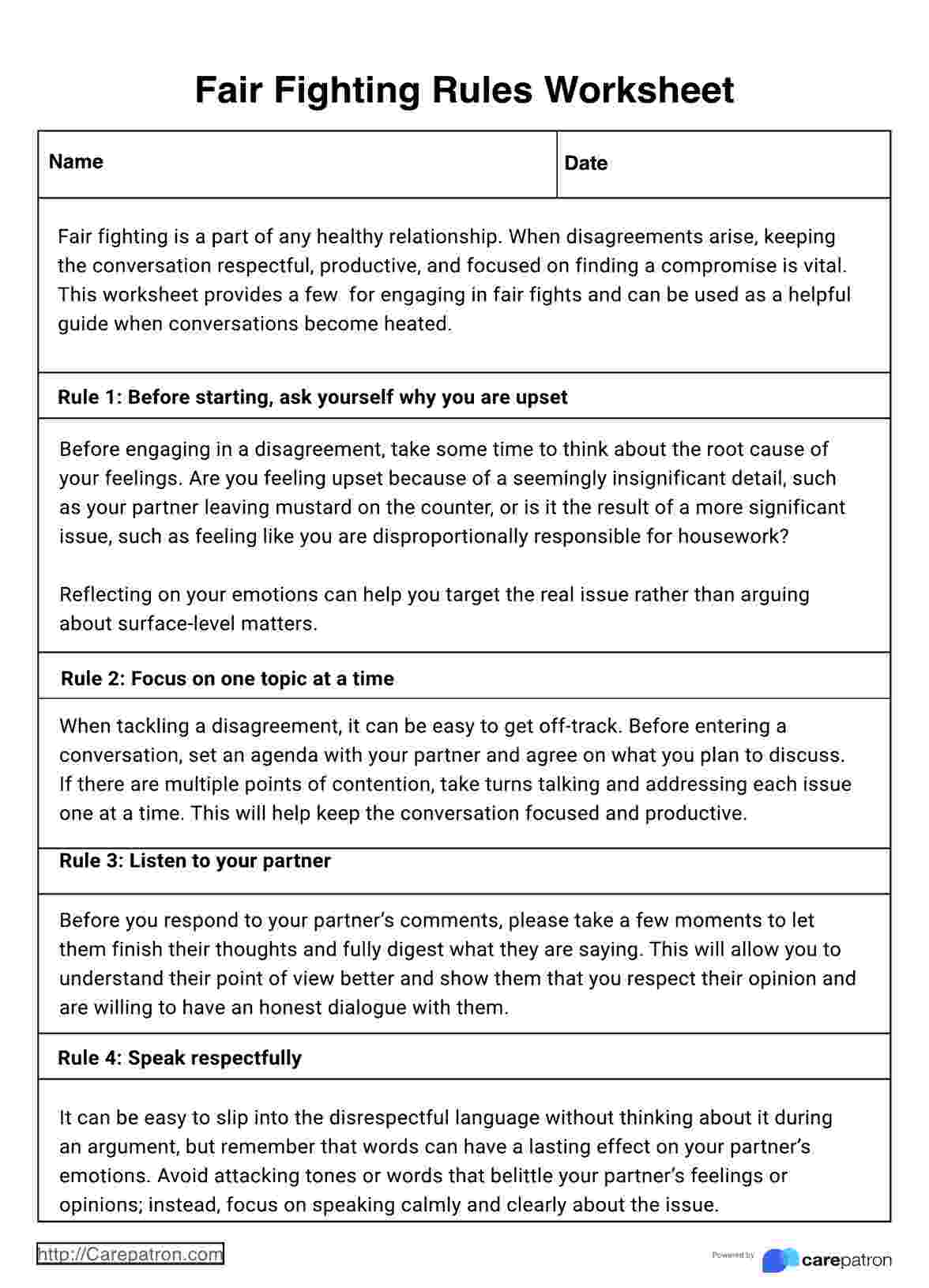The Holmes and Rahe Stress Scale
Utilize the Holmes and Rahe Stress Scale for effective stress management. Access our detailed, free guide to get started!


What is the Holmes and Rahe Stress Scale?
The Holmes and Rahe Stress Scale, also known as the Social Readjustment Rating Scale, is a psychological tool that psychiatrists Thomas Holmes and Richard Rahe developed. This scale is designed to quantify the impact of significant and stressful life events on an individual's health. The scale lists various life events, assigning each a specific number of "life change units" based on how stressful they are perceived to be. The total score, or stress scale score, is calculated by adding the life change units for each event experienced by an individual within a specific time frame, usually the past year.
The Rahe Stress Scale aims to predict the risk of illness following these stressful life events. Higher scores on the scale are correlated with a higher risk of ill health, as the accumulation of stress from these events can lead to a breakdown in health. This concept is grounded in the understanding that both chronic stress and acute life changes can significantly impact physical and mental health.
Holmes and Rahe's research also explored how different populations might react to the same stressful events, considering factors like social environment, living conditions, and personal habits. Their work subsequently validated the scale in various cross-cultural studies, indicating its relevance across different cultural contexts.
In addition to major life events, the scale considers aspects of daily life and social activities, like changes in financial state, living conditions, or relationships with close family members and friends. This comprehensive approach helps understand how various stresses can cumulatively lead to health issues.
Overall, the Holmes and Rahe Stress Scale remains an important tool in psychological research and clinical practice, aiding in assessing stress and its potential to lead to illness and health breakdown. It underscores the significant role of life events in shaping an individual's stress response and overall well-being.
The Holmes and Rahe Stress Scale Template
The Holmes and Rahe Stress Scale Example
When should this stress scale be used?
The Holmes and Rahe Stress Scale, or the Social Readjustment Rating Scale, is best used in several contexts:
- Assessing risk of stress-related illness: It's particularly valuable for identifying individuals at risk of stress-related health breakdown. By quantifying the impact of significant life events, the scale helps predict the likelihood of near-future health change, mainly due to stress-related illnesses.
- Research purposes: In research settings, this scale can be used to study the relationship between stress and illness. Researchers may use it to gather data on how different life events and stress scale scores correlate with physical and mental health outcomes.
- Clinical settings: Healthcare professionals might use it to understand a patient's recent life changes. Recognizing the stressors in a patient's life can guide clinicians in providing more tailored care, especially for those with a high accumulation of life-change units indicating elevated stress levels.
- Personal self-assessment: Individuals can use the scale to self-evaluate their stress level due to recent life events. This can be a first step in recognizing the need for stress management strategies or professional help.
- Workplace stress assessment: In organizational settings, the scale can help assess employees' stress levels, especially following major life changes. This can be part of a broader wellness program to enhance employee well-being.
- Therapeutic contexts: Therapists and counselors may use the scale to assess stress levels in clients, helping to tailor therapeutic interventions. Understanding the stressors related to major life events can assist in developing effective coping strategies.
- Educational and training programs: In contexts like stressful training programs or educational settings, the scale can help understand stress's impact on students or trainees.
It's important to note that while the Holmes and Rahe Stress Scale is a useful tool, it should be used as part of a comprehensive assessment of stress and health. Stress is subjective, and individual responses to life events can vary greatly, influenced by personal habits, social support, and coping mechanisms.
How does the Holmes and Rahe Stress Scale work?
The Holmes and Rahe Stress Scale, also known as the Social Readjustment Rating Scale, operates on a straightforward yet insightful principle. Here's how it works:
- Listing of life events: The scale consists of a list of major life events and stressful life events, each assigned a specific number of points, referred to as "life change units." These events cover a wide range of experiences, from highly impactful ones like the death of a spouse or divorce to less intense but still significant events like a change in sleeping habits or personal habits.
- Scoring system: Each life event is assigned a score that reflects its potential impact on an individual's stress levels. For example, the death of a spouse has a higher score compared to events like a minor violation of the law. The scores are based on the average degree of stress that each event typically produces.
- Calculation of total score: An individual or a researcher calculates the complete score by adding the points for each life event that the person has experienced over a certain period, usually the past year. This cumulative score represents the total stress load.
- Assessment of stress level and health risk: The total score is used to estimate the individual's level of stress and the risk of developing health problems. According to Holmes and Rahe's original research, a score of 150 or less suggests a relatively low risk of illness, 150-299 indicates a moderate risk, and 300 or higher points to a high risk of disease due to stress.
- Predictive tool: The scale is predictive. Higher scores are believed to indicate a higher likelihood of experiencing stress-induced health breakdowns in the near future. This is based on the premise that as life change units accumulate, so does the risk of stress-related health issues.
- Subjective interpretation: While the scale provides a standardized method of scoring, it's important to remember that individual responses to the same life event can vary. Factors like personal resilience, coping mechanisms, and social support play a significant role in how stress affects an individual.
- Use in various contexts: The scale is used in clinical settings, research, workplace stress assessments, and personal self-evaluation to understand how life changes can impact an individual's stress levels and overall health.
In essence, the Holmes and Rahe Stress Scale is a tool to quantify the impact of life changes on stress levels, serving as a guide to understanding and managing stress more effectively.
Common causes of stress
- Major life events: Changes like moving to a new home, marriage, divorce, or the death of a loved one can significantly increase stress levels.
- Workplace challenges: Job insecurity, heavy workload, long hours, or conflicts with colleagues or superiors are common stressors.
- Health issues: Chronic illness, injury, or receiving a diagnosis of a serious health condition can cause substantial stress.
- Financial problems: Debt, financial instability, or concerns about money are major sources of stress.
- Relationship issues: Problems in personal relationships, whether with a partner, family, or friends, often lead to increased stress.
- Environmental factors: Living in an area with high crime rates, noise pollution, or overcrowding can contribute to chronic stress.
- Personal expectations and habits: High personal standards, perfectionism, or unhealthy habits like poor eating or sleeping patterns can be internal sources of stress.
Symptoms of stress
- Emotional symptoms: Feelings of being overwhelmed, irritability, anxiety, depression, or general unhappiness.
- Physical symptoms: Headaches, muscle tension or pain, fatigue, changes in sex drive, and gastrointestinal issues.
- Behavioral symptoms: Changes in appetite, sleeping patterns, increased use of alcohol, drugs, or cigarettes, social withdrawal, and exercising less often.
- Cognitive symptoms: Constant worrying, racing thoughts, forgetfulness, inability to focus, and poor judgment.
Next steps: How to reduce stress
- Identify stressors: Keep a journal to identify situations that create stress and your reaction to them.
- Healthy lifestyle choices: Engage in regular physical activity, maintain a balanced diet, and ensure adequate sleep.
- Time management: Prioritize tasks, set realistic goals, and break projects into smaller steps.
- Develop healthy coping mechanisms: Practice relaxation techniques like deep breathing, meditation, or yoga.
- Social support: Talk to friends or family about your feelings and concerns.
- Professional help: Consider seeking help from a psychologist or counselor, especially if stress is causing significant distress or disrupting your daily life.
- Mindfulness and meditation: These practices can help you stay calm and focused, reducing the impact of stress.
- Set boundaries: Learn to say no to requests or commitments that might increase your stress levels.
- Hobbies and interests: Engage in activities you enjoy as a break from daily stressors.
- Mindset shifts: Practice positive thinking and gratitude to shift your perspective on stressful situations.
Remember, while stress is a natural part of life, managing it effectively is crucial for maintaining physical and mental health. Techniques for stress reduction may vary among individuals, so it's essential to find strategies that work best for you.
Commonly asked questions
The Holmes and Rahe Stress Inventory, also known as the Rahe Stress Scale, is a tool used to measure the level of stress in individuals. It assesses the impact of various life changes and personal habits on an individual's stress levels. Assigning a relative score to different life events helps understand how these changes can contribute to stress-related health issues.
The Stress Scale evaluates subjects by asking them to recount significant life events and personal habits from the preceding year. This includes changes in eating habits, illness behavior, and interactions with close family members or friends. The scale then assigns a score to each event, helping to determine the cumulative stress level and its potential impact on health.
The Holmes and Rahe Stress Scale has been used in cross-cultural studies to understand how different cultures perceive and react to stress. While initially developed based on American populations, its application has been extended to various cultures, providing valuable insights into how stress factors vary across different cultural contexts.


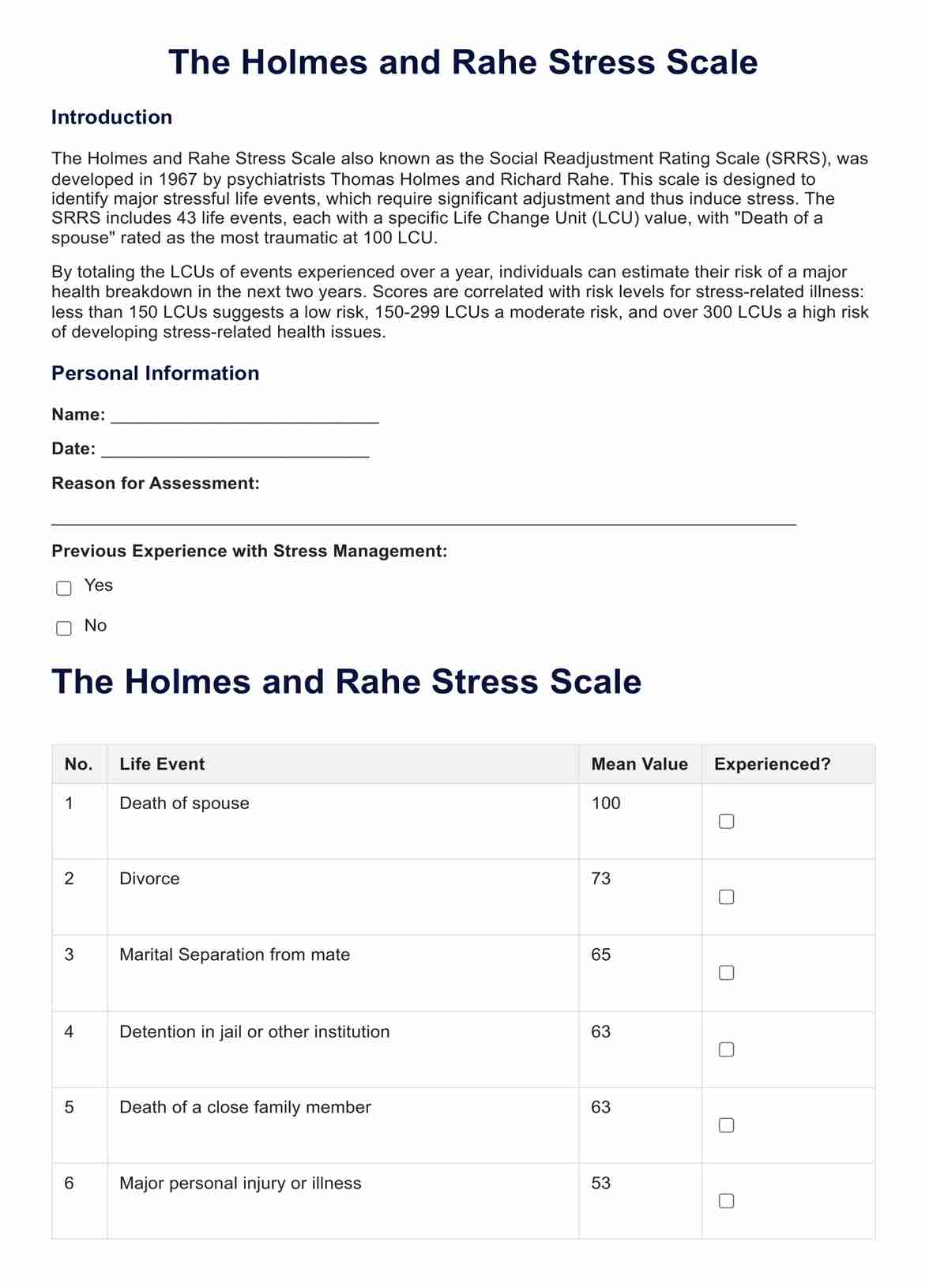
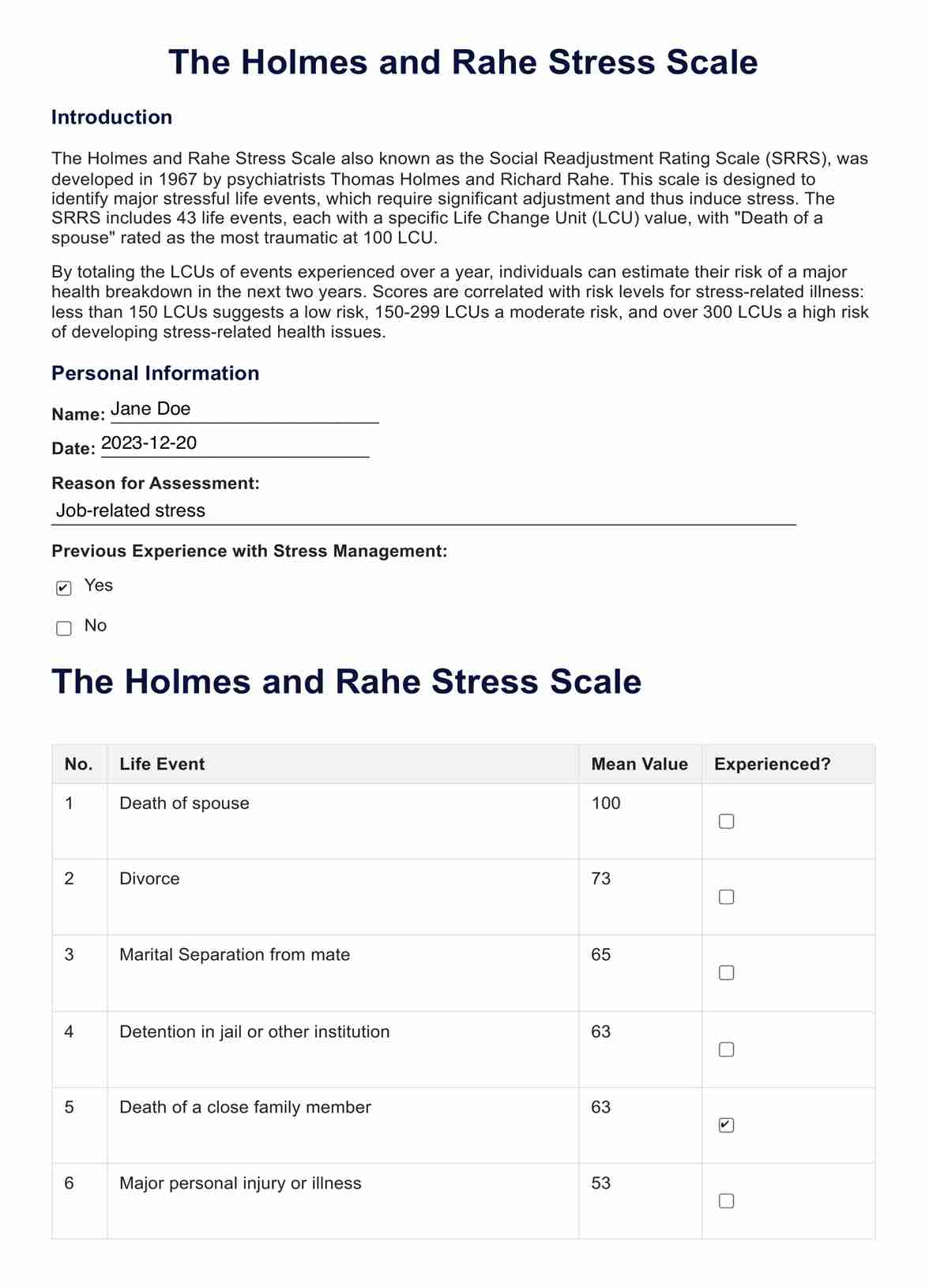

















-template.jpg)



















































































